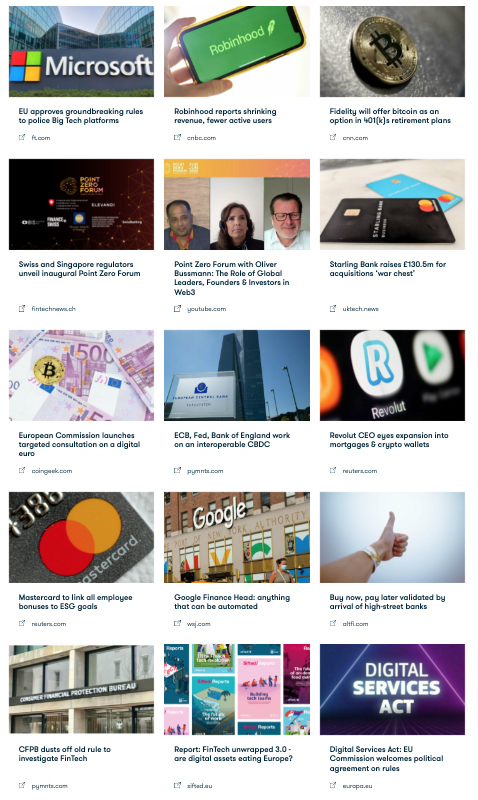FinTech Ecosystem Insights by Bussmann Advisory is our weekly newsletter with over 48’000 subscribers across different social media channels, summarizing relevant news and reports related to ecosystems around disruptive technologies, highlighting key updates from the industry as well as our portfolio companies:
- Big banks vs. Apple Pay: The battle for your digital wallet heats up
- 10 ChatGPT3 FinTech predictions for 2023
- Stripe scores major Amazon deal
More information on www.bussmannadvisory.com
The latest edition of the FinTech Ecosystem Newsletter is here:

Interested in FinTech or Digital Assets related Advisory or Workshop?
Do you want your board, executives or staff to better understand the impact of FinTech, Blockchain or Digital Assets on the future of finance? Serving as a trusted advisor to the CEO/CxO/Board we work with, helping them navigate inevitable scale-up challenges and digital opportunities.
We offer advisory services for the executive team and in-person or virtual courses with tailored topics. Contact us at info@bussmannadvisory.com for more details.


















